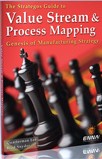|
 Autonomation
transfers a level of human intelligence to automated machinery. Machines thus detect even a
single defective part and immediately stop while asking for help. Autonomation
transfers a level of human intelligence to automated machinery. Machines thus detect even a
single defective part and immediately stop while asking for help.
The concept was pioneered by Sakichi Toyoda at the turn of the twentieth century. He invented
automatic looms that stopped instantly when any thread broke. This permitted one operator to
oversee many machines without risk of producing large amounts of defective cloth.
Taiichi Ohno considered Jidoka (Autonomation
is one variant) as one of the two pillars of the Toyota Production System.
So, What's The Big Deal?
This sort of interlock is commonplace today and we take it for granted. Modern equipment has
many types of sensors to detect broken tools, jams, defects and other abnormal conditions.
However, in the 1950's, 1960's and 1970's, automation relied on relay logic and often
required a human operator to detect abnormalities. This limited the benefits of automation
Even in the 1950's interlocks, such as the simple limit switch illustrated above, were
available. What differed at Toyota was the extent of their use. Like many of
Taiichi Ohno's methods, this is a simple idea
that he pursued for decades until it became a strategic competitive advantage.
Where To Emphasize Autonomation
Autonomation is an important component of Lean Manufacturing Strategy for high-production,
low- variety operations, particularly where product life cycles are measured in years or
decades.
In high-variety, low-volume situations, the time and effort required is prohibitive. This is
another example of how lean principles must be tailored to each situation.
|
|

Autonomation
A limit switch stops Operation #10 when the
transfer conveyor has five pieces.
|
References
MONDEN, YASUHIRO, Toyota Production System, Third Edition, Industrial
Engineering & Management Press, Atlanta, Georgia, USA, 1998.
HARRIMAN, FRED,
http://www.fredharriman.com/resources/documents/FHcom_Kaizen_Terminology_03.pdf, 2000.
OHNO, TAIICHI, Toyota Production System- Beyond Large Scale
Production, Productivity Press, 1988.
|





